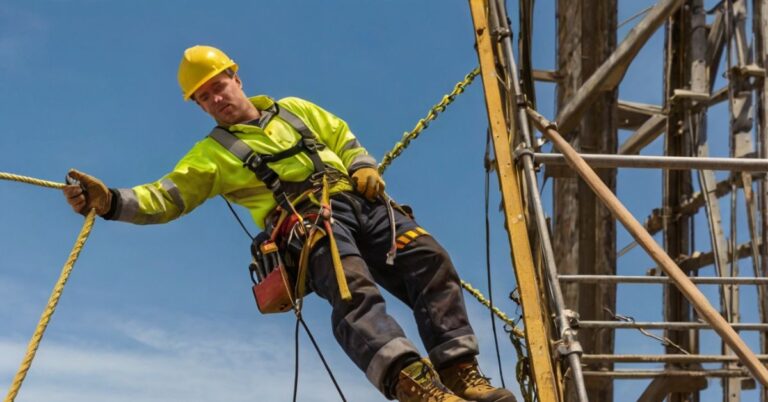In any industry that involves heights, such as construction, telecommunications, roofing, and even window cleaning, risk management must start with solid training. It’s not just about ticking boxes on a compliance form. Workers need to fully understand how to stay safe in elevated environments, not in theory but in practice. Falls continue to be one of the leading causes of serious injuries and fatalities on work sites, many of which could have been prevented with a deeper grasp of proper anchoring, equipment use, and situational awareness. A comprehensive working at heights training course that emphasizes hands-on learning helps ensure that workers don’t just pass an assessment—they walk away with the confidence and muscle memory to act quickly and correctly when it matters most. The goal isn’t only safety for oneself, but also being prepared to prevent accidents that could affect co-workers and others on the site.
Safety Starts with Real-World Preparation
- Training Beyond the Manual
While handbooks and safety posters serve a purpose, there’s no substitute for physically engaging with the tools and environments that define work related to heights. Classroom settings might introduce the concepts, but practical training is where those concepts come alive. When trainees get to handle real harnesses, adjust lanyards, walk catwalks, or simulate rescue procedures, they learn not only how things work but how they feel. This makes a difference in retention and job decision-making. A worker who has rehearsed how to check and adjust fall protection equipment is less likely to make a critical mistake under pressure. Those who have experienced a suspended fall simulation tend to understand better how quickly a minor oversight can turn into a life-threatening scenario. A working at heights training course from https://safelinegroup.ca/training/working-at-heights/ focuses on realism, preparing employees to react calmly in the face of danger, rather than freezing or forgetting under stress.
- Recognizing Site-Specific Hazards
Not every workplace is the same, and that includes the risks encountered when working at height. A good training course addresses this by helping trainees assess and respond to the kinds of environments they’ll face. High-rise buildings, sloped roofs, confined towers, or scaffold systems all present different obstacles. Workers trained in generic height safety may lack the ability to recognize these variations and adapt accordingly. On-the-ground training that mirrors those conditions is where awareness begins. For instance, navigating an inclined surface while tethered is quite different from maneuvering through a steel tower with tight anchor points. The importance of learning to evaluate the strength and placement of anchor systems can’t be overstated. Misjudging such a factor in the field can result in injury or worse. When training considers these context-specific elements, workers become more agile thinkers, able to apply core principles in real-time regardless of the setting.
- Empowering Workers to Speak Up
Another critical aspect of working at heights training is instilling a sense of responsibility not just for personal safety, but for the overall work environment. Too often, workers ignore their instincts or fail to speak up because they don’t feel qualified to challenge unsafe setups. When a training program encourages questions, promotes scenario-based discussions, and explains the “why” behind each safety measure, it creates more empowered employees. These individuals become valuable members of a safety culture, not just rule-followers. They begin to recognize when a scaffold lacks proper guardrails or when a roof anchoring point is deteriorating. They understand that pausing the job to address a concern isn’t a delay—it’s prevention. Good training lays this foundation by simulating these conversations and inviting participants to practice speaking up. It’s a mindset shift that can save lives and improve long-term compliance across teams.
- The Long-Term Value of Refresher Training
Even the most thorough initial training needs reinforcement over time. Working at heights involves complex equipment and rapidly evolving regulations, making periodic refresher training essential. Complacency is a common issue among seasoned workers, and repetition of safety procedures in a controlled environment helps reset that mindset. The value of revisiting fall arrest setups, PPE checks, ladder safety, and emergency protocols isn’t in learning something new, but in reactivating the alertness that might have faded with routine. This is especially important for companies with varied job sites or rotating staff, where exposure to height risks changes regularly. Continuous learning prevents the dangerous gap between knowledge and execution. Teams that undergo regular training tend to perform more consistently, respond faster in emergencies, and file fewer incident reports. When ongoing education is viewed as a tool for growth rather than a checkbox, it fosters trust between employers and employees and solidifies safety as a shared priority.
Working at heights is inherently dangerous, but the proper preparation transforms that danger into manageable risk. A training course that focuses on real environments, tailored hazards, and worker empowerment makes the difference between memorizing rules and internalizing them. When people understand not only what to do, but also why it matters, safety procedures become second nature rather than forced habits. The goal isn’t just to pass a test or meet compliance—it’s to ensure that every worker goes home safely at the end of the day. For employers, this means fewer delays, fewer liabilities, and stronger teams. For workers, it means the confidence to handle every job with clarity and care. Training grounded in reality doesn’t just meet standards—it builds a culture of accountability and readiness.

